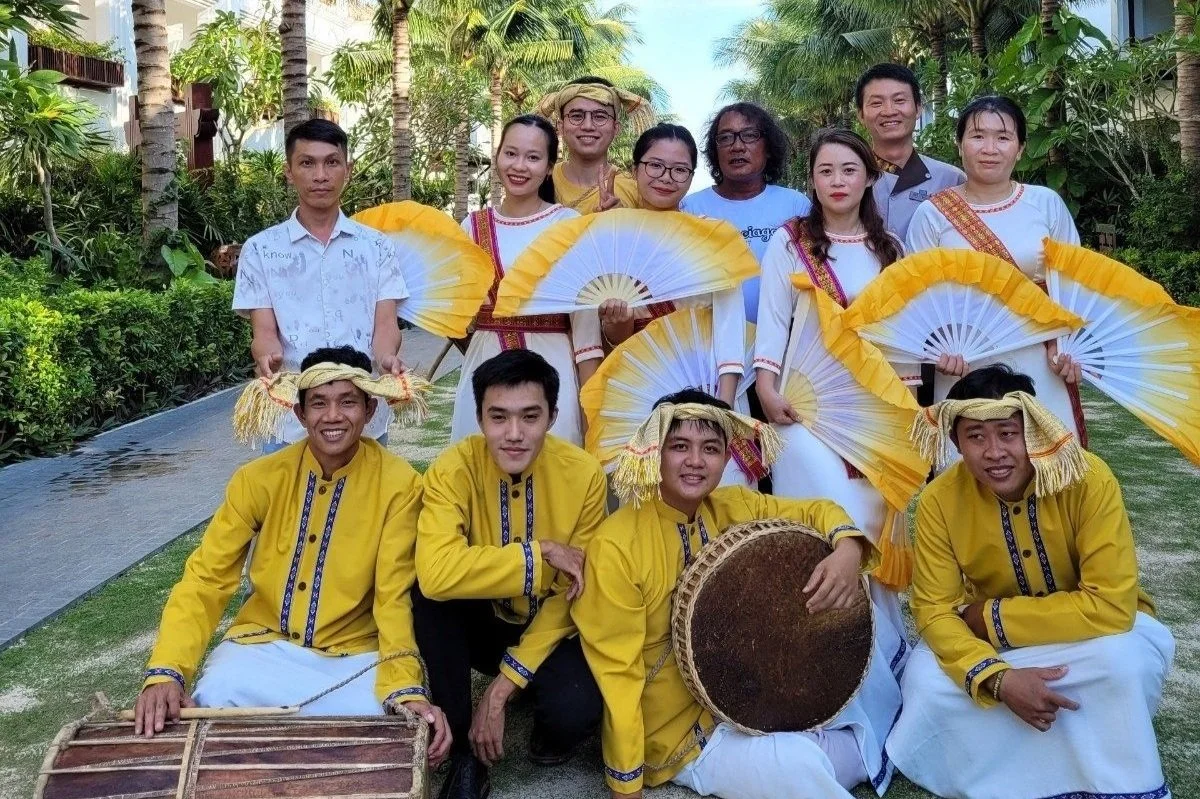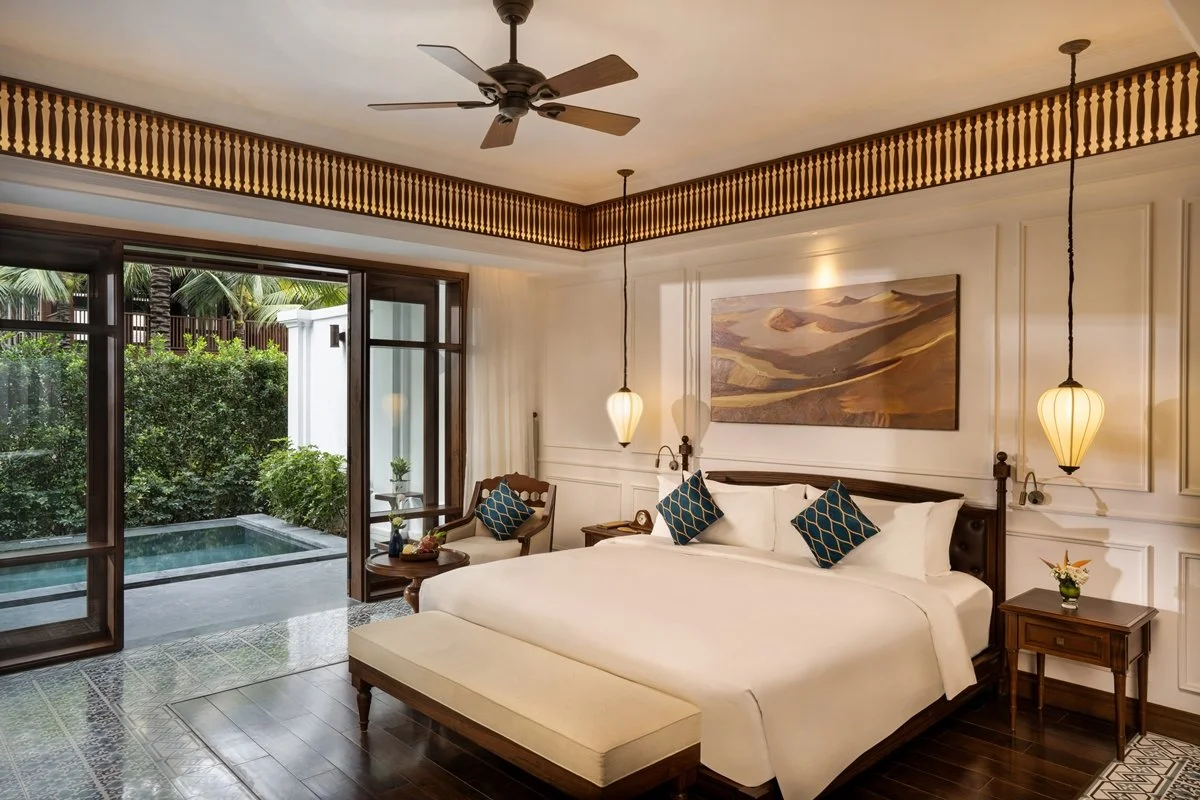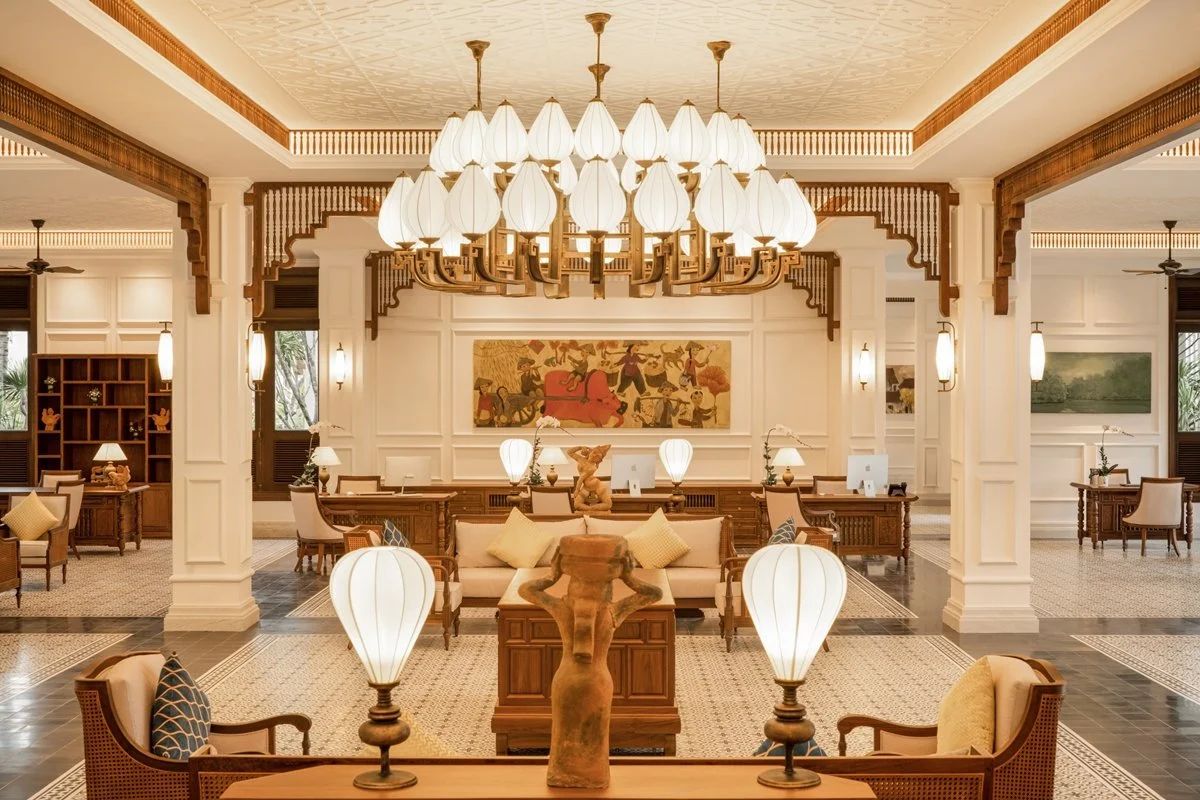The Anam Mui Ne Offers a Gateway to Authentic Vietnamese Culture and Craftsmanship
The Anam Mui Ne Offers a Gateway to Authentic Vietnamese Culture and Craftsmanship
Daily sundowner ceremony, original artwork and interior design all embrace local traditions
Every evening at sunset, staff at The Anam Mui Ne dressed in traditional Cham garb, and accompanied by the beating of drums, lead a procession from the resort’s elegant lobby through its lush grounds down to the pristine white sand beach.
The newly introduced sundowner ceremony, illuminated by candles and paying respect to the ancient Champa kingdom that formerly reigned over the area for centuries, is an illustration of how the upscale oceanfront resort in southern Vietnam that opened in January draws on local culture to create an authentic and immersive guest experience.
“The Anam Mui Ne offers a sense of timeless luxury, with distinctive hallmarks of age-old artisan craftsmanship, a design inspired by Vietnam’s bygone Indochine era, and close attention paid to our cultural predecessors,” says Martin Koerner, The Anam’s group commercial director.
From exquisite tile patterns to hand-carved wooden furniture and one-of-a-kind, purpose-built lighting, The Anam Mui Ne’s interior design embraces traditional materials wherever possible, with an emphasis on solid wood, heavy stone and other natural products, brought together by skilled local artisans and showcased in the lobby, facilities and 127 guest rooms and suites.
Architecture at The Anam Mui Ne has been guided by Hanoi’s grand old French villas. Throughout the property, including in guest rooms and suites, renowned Vietnamese artists such as Bui Van Quang and Vu Trong Anh have been commissioned to create more than 250 original oil paintings depicting daily Vietnamese life and figures in traditional dress, along with modern, abstract interpretations of Vietnamese scenery.
“Original artwork means that every guest room in our hotel is unique and different,” Koerner says. “One room might feature an oil painting in brilliant red hues showing a woman and a vase full of flowers, while in another room the painting might be a soft green and yellow landscape. And the overall feeling in the spaces, which are otherwise identical, completely changes.”
Design flourishes at The Anam Mui Ne evoke a romantic atmosphere, with glowing lanterns, customized mosaics, big-bellied clay water vases, statues on plinths, imperial-style roofs, cornice detailing and intricate woodwork, many of which have been handcrafted by workers from across Vietnam whose trades have been handed down the generations.
The resort is dotted with traditional pottery art, including some 70 large vases and 50 statues, all produced locally in Phan Rang by the Cham people. UNESCO has declared the Cham people’s pottery art as cultural heritage in need of urgent safeguarding. The ancient Champa kingdom reigned over modern-day Vietnam’s central and southern coastal region from the 2nd to the 17th centuries. Today, The Anam Mui Ne keeps the spirit of their traditions alive through partnerships with local artisans in the modern Cham community.
Adding a further touch of old-world sophistication to the resort is a collection of black-and-white photographs depicting traditional fishing villages, local salt fields and Vietnamese people prominently on display in Lang Viet Restaurant & Bar and other areas.
The Anam Mui Ne, set on 1.2 hectares of spectacular oceanfront, follows its predecessor five-star sister property, The Anam Cam Ranh, which opened in 2017 and has been lauded by industry-leading publications worldwide. Condé Nast Traveler in the U.S. quickly named it one of the top 25 resorts in Asia. The properties are both independently owned and operated, lending them a “bespoke” feel that combines modern comfort with timeless elegance.





